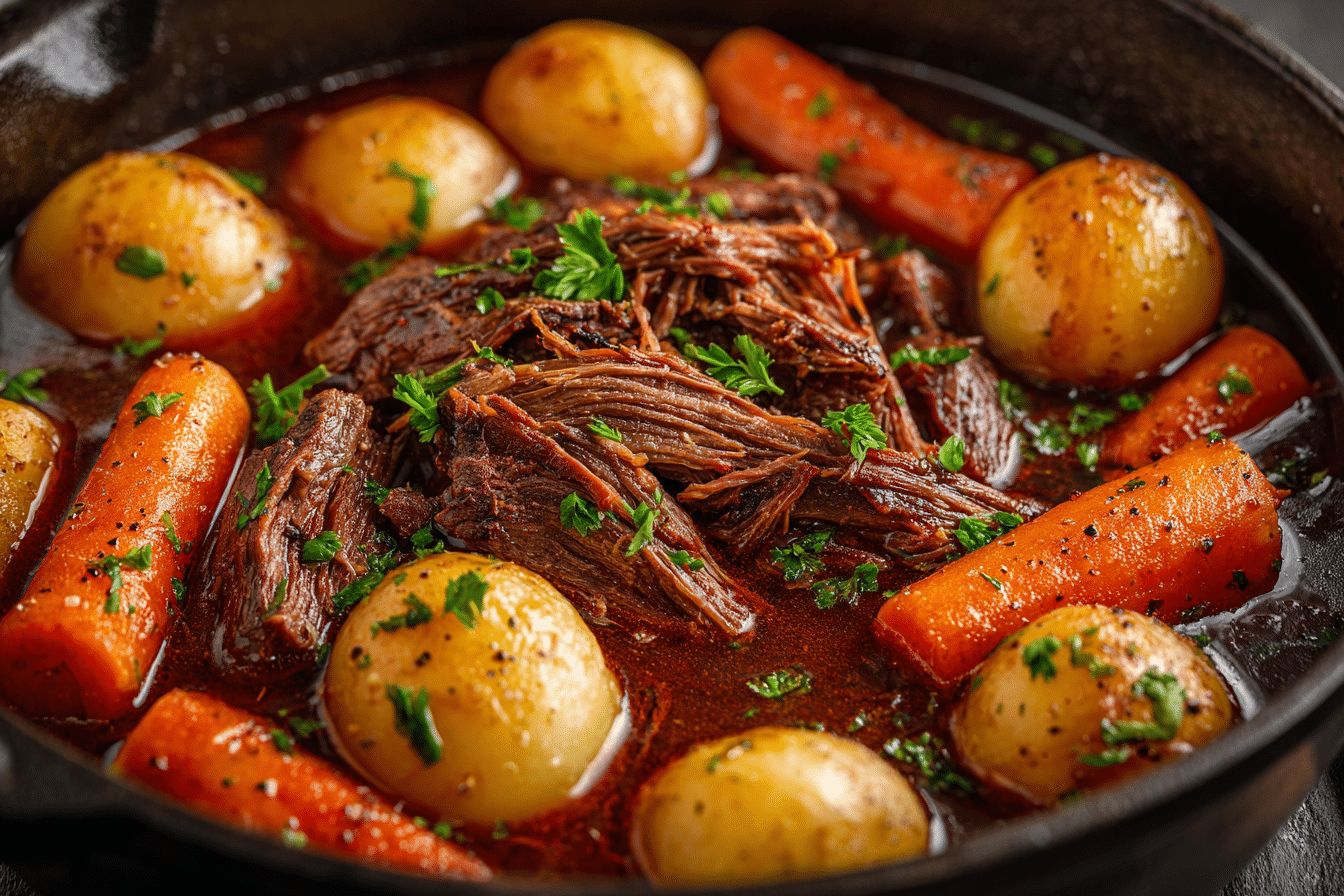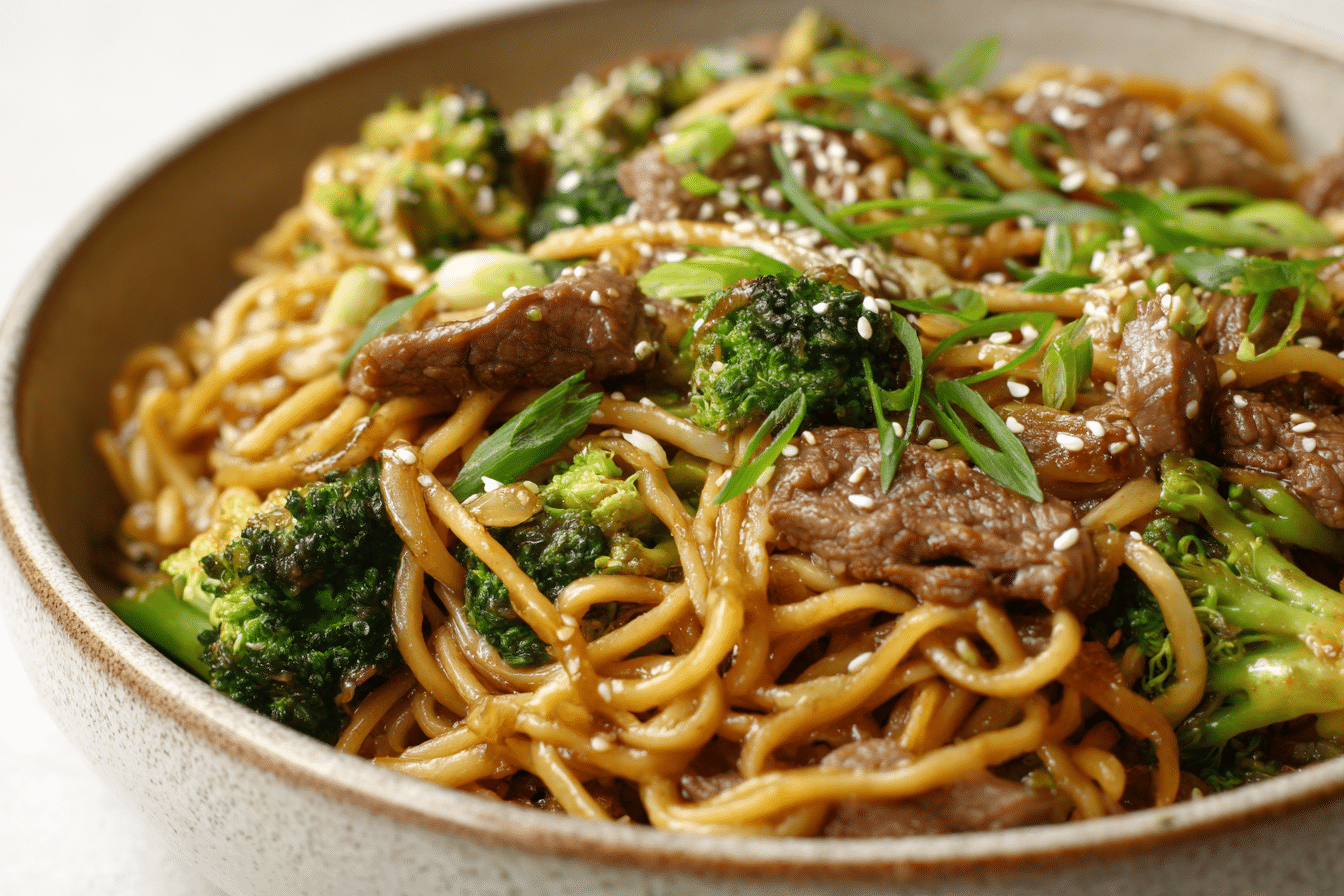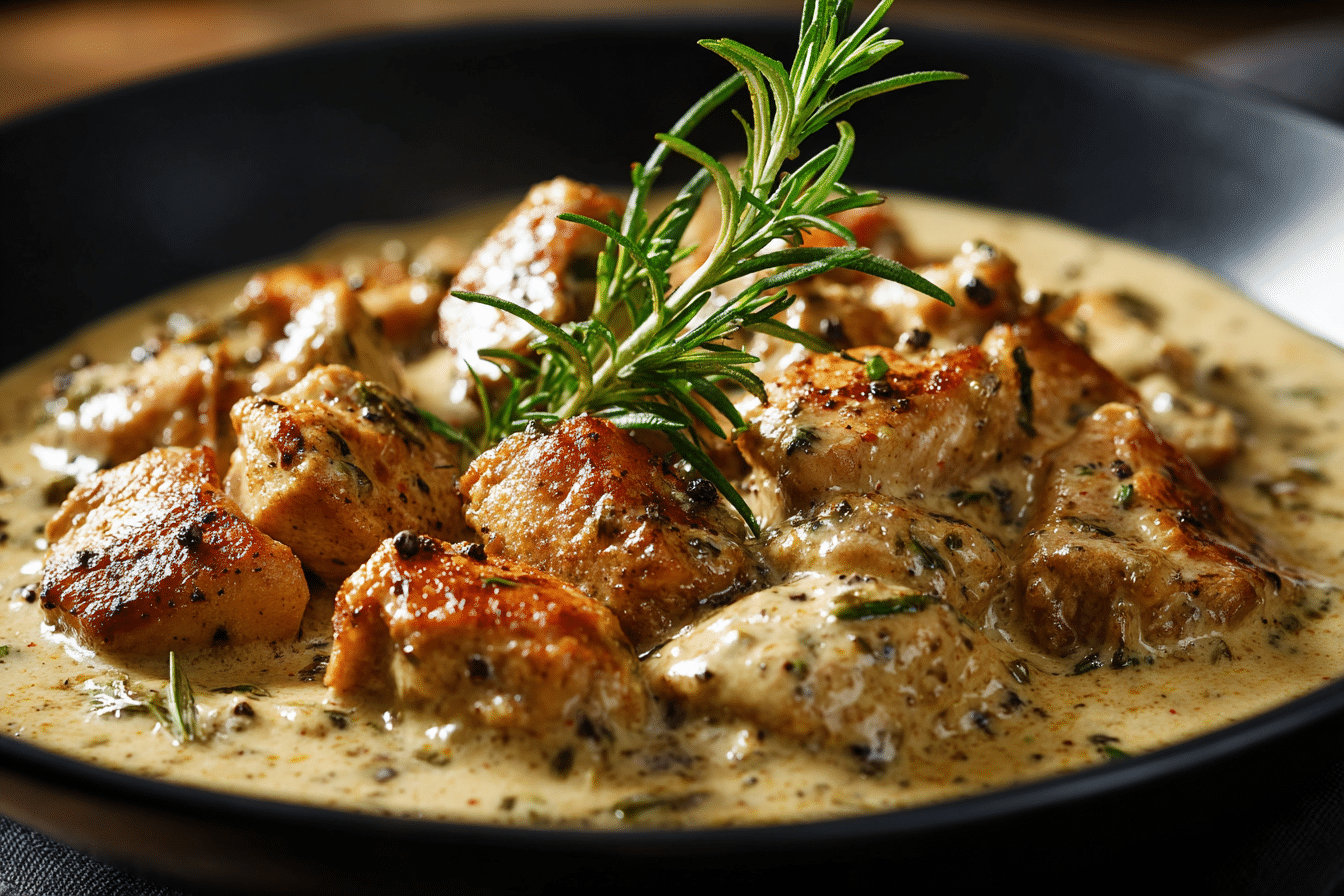There’s something timeless and comforting about a crock pot roast beef—a hearty meal that fills your kitchen with rich, savory aromas and promises fall-apart tenderness in every bite. Whether you’re cooking for a Sunday family dinner or preparing easy leftovers for the week, this slow-cooked classic delivers.
Rooted in traditional American home cooking, roast beef made in a crock pot has become a go-to for busy families and comfort food lovers alike. The slow cooker transforms a humble cut of beef into a succulent, flavorful dish infused with aromatic vegetables and herbs. It’s the kind of meal that brings everyone to the table, eager for seconds.
If you’ve ever wanted a no-fuss, foolproof method for making roast beef that’s both juicy and fork-tender, this recipe is it.
Ingredients Overview
Here’s a look at the essential components that make this crock pot roast beef recipe shine:
Beef Chuck Roast
The best choice for crock pot roast is a 3–4 lb chuck roast. It’s a well-marbled cut that becomes incredibly tender when slow-cooked. Avoid leaner cuts like round roast, which tend to dry out.
Alternative: Brisket or bottom round can be used, but expect a slightly different texture.
Aromatics: Onion and Garlic
Sliced yellow onions and minced garlic cloves add depth and sweetness. As they cook down, they dissolve into the broth, creating a natural gravy base.
Tip: For a bolder flavor, caramelize the onions in a pan before adding them to the crock pot.
Root Vegetables
-
Carrots (cut into chunks)
-
Yukon gold or red potatoes (halved or quartered)
These classic additions soak up the meaty juices and provide a full meal in one pot.
Variation: Add parsnips or turnips for a more rustic flavor.
Beef Broth
About 2 cups of low-sodium beef broth helps tenderize the meat and build a rich, flavorful base.
Optional Add-ins: A splash of red wine or Worcestershire sauce deepens the umami profile.
Herbs and Seasonings
-
Bay leaf
-
Fresh rosemary and thyme
-
Salt and freshly cracked black pepper
Herbs bring an earthy, fragrant layer to the roast. Use fresh if available, or substitute with dried herbs in a pinch.
Cornstarch (for Gravy)
To thicken the juices into a savory gravy, mix a slurry of cornstarch and water after cooking.
Step-by-Step Instructions
1. Prepare the Roast
Pat the roast dry with paper towels and season generously with salt and pepper on all sides.
Optional step: Sear the roast in a hot skillet with a bit of oil for 2–3 minutes per side until browned. This adds a rich crust and intensifies the flavor.
2. Layer the Vegetables
Place chopped onions, garlic, carrots, and potatoes into the bottom of the crock pot. These create a natural roasting rack for the beef to sit on while absorbing all the juices.
3. Add the Roast
Set the seasoned roast directly on top of the vegetables. Tuck in rosemary, thyme, and a bay leaf around the sides.
4. Pour in the Broth
Pour beef broth over the roast and vegetables. If desired, add 1–2 tablespoons of Worcestershire sauce or ½ cup of red wine.
5. Slow Cook
Cover and cook on:
-
Low for 8–10 hours (best for tenderness), or
-
High for 4–6 hours if you’re short on time.
Avoid opening the lid during cooking—it releases heat and can slow down the process.
6. Thicken the Gravy (Optional)
Once the roast is cooked and tender, transfer the beef and vegetables to a platter.
Pour the cooking liquid into a saucepan. Mix 2 tablespoons cornstarch with 2 tablespoons cold water and whisk it into the liquid over medium heat until thickened (about 5 minutes).
7. Shred and Serve
Slice or shred the roast beef and return it to the crock pot or serve directly on a platter with vegetables and a ladle of gravy.
Tips, Variations & Substitutions
-
Don’t skip seasoning: A generous salt rub is key for flavor absorption during long cooking.
-
Make it gluten-free: Ensure your broth and Worcestershire sauce are labeled gluten-free.
-
Vegan version: Substitute with jackfruit or mushrooms and vegetable broth for a plant-based twist.
-
Low-carb option: Omit the potatoes and add celery, cauliflower, or radishes.
Regional Variations
-
Mississippi Pot Roast: Add ranch seasoning, pepperoncini peppers, and a stick of butter.
-
Italian-style: Use Italian seasoning, diced tomatoes, and olives.
-
French Dip style: Cook without vegetables and serve the beef on toasted rolls with au jus.
Serving Ideas & Occasions
This crock pot roast beef is incredibly versatile. Here are a few perfect pairings and occasions:
-
Weeknight dinner: Serve with crusty bread to soak up the gravy.
-
Holiday gatherings: A crowd-pleasing alternative to ham or turkey.
-
Meal prep: Shredded beef makes great sandwiches, wraps, or grain bowls throughout the week.
-
Cold-weather comfort: A warm, hearty dish ideal for cozy evenings.
Pair with a crisp green salad, steamed green beans, or creamed spinach for a balanced plate. A glass of red wine or sparkling cider completes the experience.
Nutritional & Health Notes
This dish offers a solid balance of protein, carbohydrates, and fats. The chuck roast is high in protein and iron, while carrots and potatoes contribute fiber and essential vitamins.
Health tips:
-
Skim the fat from the cooking liquid before making gravy if you want a leaner meal.
-
Use sweet potatoes for added antioxidants.
-
Choose a grass-fed beef chuck roast for a cleaner fat profile and more omega-3s.
Each portion (about 6 oz of beef with vegetables) contains approximately:
-
Calories: 450–500
-
Protein: 35–40g
-
Carbs: 20–25g
-
Fat: 25–30g
FAQs
Q1: Can I cook roast beef without searing it first?
Yes, searing is optional. It adds flavor and a crust, but if you’re short on time or prefer a dump-and-go method, you can skip it. The slow cooker still yields a tender, flavorful roast.
Q2: What’s the best cut of beef for a crock pot roast?
A chuck roast is ideal due to its marbling, which breaks down over long cooking. Brisket, shoulder, or bottom round also work but may be leaner and less tender.
Q3: Can I add frozen vegetables?
While possible, it’s better to use fresh vegetables. Frozen ones can become mushy after hours of cooking and may water down the broth.
Q4: How do I store and reheat leftovers?
Store in an airtight container in the fridge for up to 4 days, or freeze for up to 3 months. Reheat gently on the stovetop or in the microwave with a splash of broth to retain moisture.
Q5: Can I make this recipe in an Instant Pot?
Yes! Use the “Sauté” function to sear, then pressure cook on High for 60 minutes, followed by a natural release. You’ll get similar tenderness in a fraction of the time.
Q6: How can I thicken the gravy without cornstarch?
Use arrowroot powder or make a roux with butter and flour. Blend some cooked vegetables into the broth for a rustic, natural thickener.
Q7: Is this dish suitable for a low-sodium diet?
Yes, with adjustments. Use low-sodium broth, limit added salt, and skip Worcestershire sauce. Season with herbs and garlic instead to keep the flavor robust.
Print
Crock Pot Roast Beef Recipe – Tender, Juicy & Comforting Classic
Description
A tender, juicy crock pot roast beef with vegetables, slow-cooked to perfection in a rich, herby broth. Ideal for cozy dinners and meal prep.
Ingredients
-
3–4 lb beef chuck roast
-
1 tbsp salt
-
1 tsp black pepper
-
1 tbsp olive oil (optional, for searing)
-
1 large onion, sliced
-
4 garlic cloves, minced
-
4 large carrots, cut into chunks
-
1.5 lbs Yukon gold potatoes, halved
-
2 cups beef broth (low-sodium)
-
1 tbsp Worcestershire sauce (optional)
-
1 bay leaf
-
2 sprigs fresh rosemary
-
2 sprigs fresh thyme
Instructions
-
Pat the roast dry and season with salt and pepper.
-
(Optional) Sear roast in olive oil until browned on all sides.
-
Place onion, garlic, carrots, and potatoes in bottom of crock pot.
-
Set roast on top. Add herbs, bay leaf, and broth.
-
Cover and cook on low for 8–10 hours, or high for 4–6 hours.
-
Remove roast and veggies.
-
Optional: Pour juices into a saucepan, thicken with 2 tbsp cornstarch + 2 tbsp cold water slurry.
-
Serve sliced or shredded roast with vegetables and gravy.
Notes
-
Use sweet potatoes or parsnips for variation.
-
Skip searing for a faster prep.
-
Store leftovers in fridge up to 4 days, or freeze up to 3 months.





